Golden Triangle Tour India-
Day 01 Arrive In Delhi
Arrive at New Delhi’s Indira Gandhi International airport.
Delhi – the capital of India – The city consists of two parts – Old & New Delhi. Old Delhi was the capital of Muslim India between 17th and 19th century and has many mosques, monuments and forts. New Delhi, the imperial city was created by the British as the capital of India. In 1911, Edwin Lutyens, the most renowned English architect of the day, was chosen to design New Delhi which flaunts a surprising number of impressive monuments related to its conquests by the Mughals, Turks, Persians and ultimately the British.
Meet & Assist: You will be met on arrival & transfer to your hotel in air-conditioned vehicle.
Check-in at your hotel in Delhi for 2 nights which begins your Golden Triangle Tour of India
Meals included: None
Overnight: Hotel
Day 02 Delhi
Morning visit Old Delhi which was the capital of Muslim India between 17th and 19th century and has many mosques, monuments and forts. Begin your day with an exploration of Old Delhi – visit the Jama Masjid, the royal mosque built by the Mughal Emperor, Shah Jahan in 1656. It is one of the largest and most beautiful mosques in the world and is constructed in red sandstone and white marble. The main prayer hall has a seating capacity of more than 20,000 worshippers. In the old city of Delhi, walk through the by-lanes of the spice market, the wedding street and the jeweler’s lane to savor the 350 years old culture up-close. There will be great photo opportunities here.
Enjoy a cycle rickshaw ride through the narrow lanes of Chandni Chowk, the spine of Old Delhi. Jahanara Begum, the daughter of Shah Jahan designed this commercial place in 1648. Drive past Red fort, built in red sand stone by Shah Jahan in 1648, this magnificent monument is laid out along the river Yamuna as an irregular octagon. Drive through the majestic boulevards of New Delhi designed by the Edwin Lutyens in 1920. Lutyens’ Delhi includes the grand government buildings and parliament house.
The Rashtrapati Bhavan (Presidential Palace) is where the Viceroy once lived and now is the official residence of the President of India. It is an imposing structure with 340 rooms, constructed high up on Raisina Hill. View India Gate, a war memorial arch built in honour of 90,000 Indian soldiers who lost their lives in World War.
Continue to Humayun’s Tomb, the first great example of Mughal architecture in India, it developed to become the hallmark of the Mughal Dynasty. Culminate your tour at Qutab Minar, a soaring tower of victory, 72.5meter high with five distinct stories. The construction of this minaret commenced in 1193 and was completed in 1368. Built on the foundation of a Hindu temple, many elements of the construction reflect their Hindu and Jain origins. Within the complex, there are myriad monuments that combine both Islamic calligraphy and Hindu motifs.
Return to hotel after the above visits.
Overnight at Hotel
Day 03 DELHI – AGRA
After breakfast, drive to Agra through covering a distance of 200kms in approx. 3-4 hours which is second attraction of Golden Triangle Tour Package from Delhi.
Agra: Two great Mughal monarchs, Akbar and Shah Jahan, transformed the little village of Agra into a befitting second capital of the Mughal Empire. Today, a visitor to Agra is caught up in a world of contrasting edifices of red sandstone and white marble, narrow lanes and quaint buggies, and that irresistible charm that this favorite city of the Mughals still retains.
Arrive at Agra and check-in at your hotel for an overnight.
Afternoon enjoy city tour of Agra- visit Taj Mahal & Agra Fort.
Note: Taj Mahal remains closed on every Friday.
Taj Mahal – The 17th century Taj Mahal is often called a poem in stone. If so, the mausoleum is a love poem – created by Mughal Emperor Shah Jahan for his favorite wife Mumtaz Mahal. It took 22 years to be completed and was designed and planned by a Persian architect Ustad Isa. Apart from its stunning design balance and perfect symmetry, the Taj is also noted for its elegant domes, intricately carved screens and some of the best inlay work ever seen. (Taj Mahal remains closed on Fridays.
Agra Fort – situated two kilometres towards west of the Taj Mahal on the banks of the river Yamuna. It was built by the third Mughal Emperor, Akbar, and added to by his son Jahangir and grandson Shahjahan. Agra Fort is an imposing structure with walls of red sandstone, almost two miles long and contains palaces, audience halls and mosques built by all the three emperors. The fort presents a good sampling of Islamic and Hindu architectural styles.
Overnight: Hotel
Day 04 AGRA – JAIPUR
Breakfast at hotel.
Later drive to Jaipur covering a distance of 260kms in approx. 6 hours.
En-route visit Fatehpur Sikri
Fatehpur Sikri, the deserted red sandstone city was built by Emperor Akbar as his capital and Palace in the late 16th century. It is a veritable fairy tale city and its ruins are in pristine condition. It is not hard to imagine what the court life must have been like in the former days of its grandeur. Also visit the Bulund Darwaza, which is the largest gateway in the world.
Continue your drive to Jaipur which is the last but most appealing terminus of Golden Triangle tour India.
Jaipur: The city was first intended to be called ‘Sawai Jaipur’, named after the boy Prince who commissioned it – Maharaja Jai Singh II – a warrior, astronomer and politician who reigned over the Mughals from 1699 to 1743. Today’s Jaipur is pink, visually described as the city shaded with the autumn colors of sunset. Although originally the walls were render set and pigmented the color of red sandstone, Jaipur’s universal coat of pink only came in 1876 to coincide with the visit of the Prince of Wales (King Edward VII). Almost the entire city was given a coat of pink paint, thus giving it the name the ‘Pink City’.
Arrive in Jaipur and check-in at your hotel for 2 nights.
Overnight: Hotel
Day 05 JAIPUR
Morning enjoy an excursion to the magnificent Amber Fort.
Tour the chambers and hallways of the palace, famous for the excellence of its design and decoration. Within the complex is Ganesh Pol, an imposing gateway painted with the images of the elephant-headed god, Ganesh. The merging of Rajput and Mughal architectural styles is captured in the Sukh Niwas and Jas Mandir apartments, and the Charbagh garden with its perfectly proportioned landscaping. Pierced screen windows offer views from different vantage points & shimmering mirrors encrust walls of Sheesh Mahal.
Later enjoy an orientation tour of Jaipur.
Visit the Jantar Mantar Observatory. Built in the 1700s but still appears to be futuristic. It houses unique instruments for measuring the harmony of the heavens! Continue your visit to City Palace to witness the Maharaja’s private collection of textiles and armory. Culminate the tour with a photo stop at Hawa Mahal also known as the “Palace of the Winds.” This beautiful façade is probably the most-photographed in Jaipur, with its ornately carved windows designed so the ladies of the palace could look out onto the streets unobserved.
Overnight: Hotel
Day 06 JAIPUR – DELHI & LEAVE DELHI
Morning free.
Afternoon transfer to Delhi international airport to connect flight for onward destination.
With Memories of Golden Triangle Tour Package from Delhi
Inclusions
- 05 nights’ accommodation on twin share at the hotels mentioned above.
- Daily breakfast at the hotel as per the program.
- Transport using an air-conditioned Medium car for the entire tour as per the itinerary.
- Service of an English speaking locally appointed guide during sightseeing as per programme.
- All presently applicable taxes.

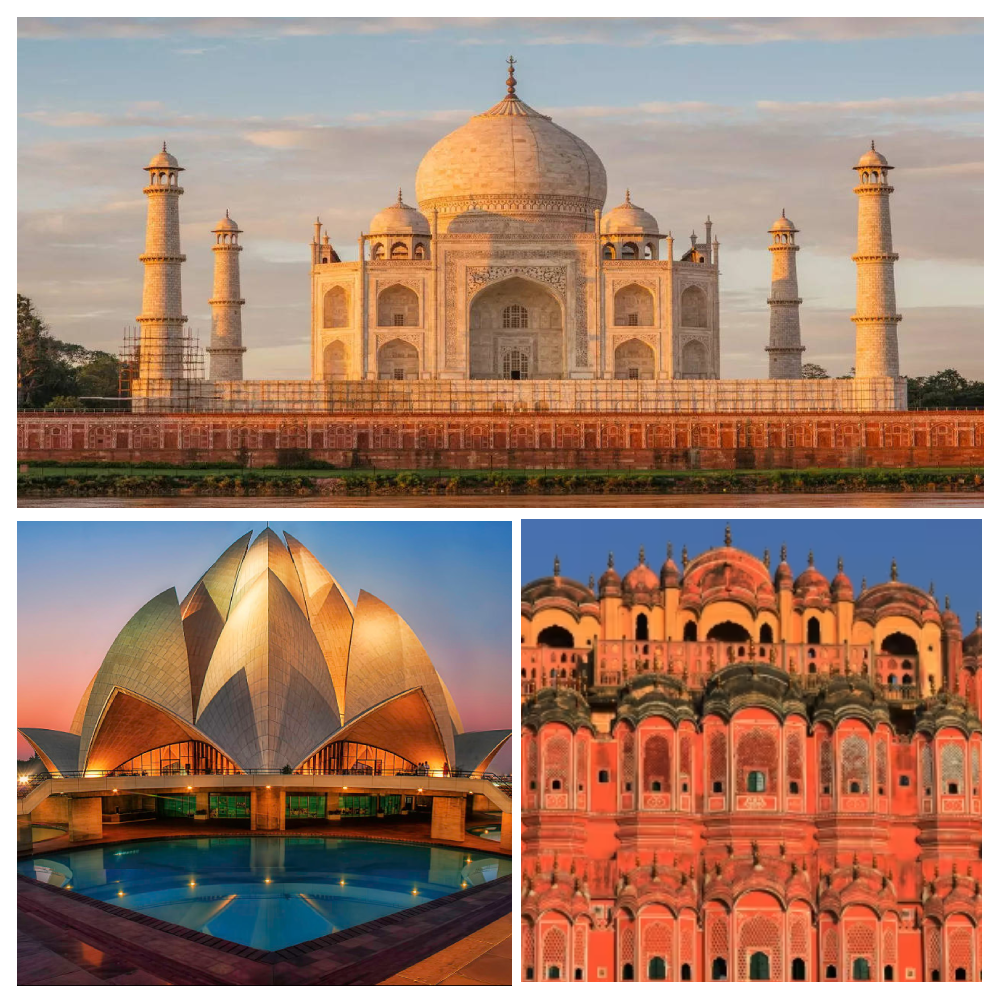


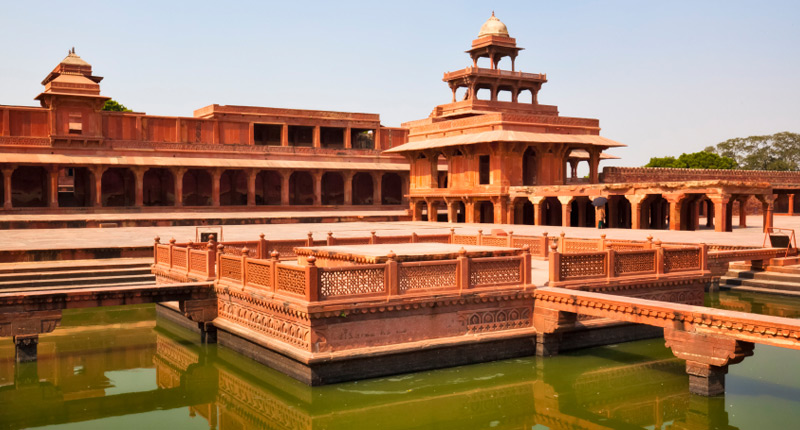
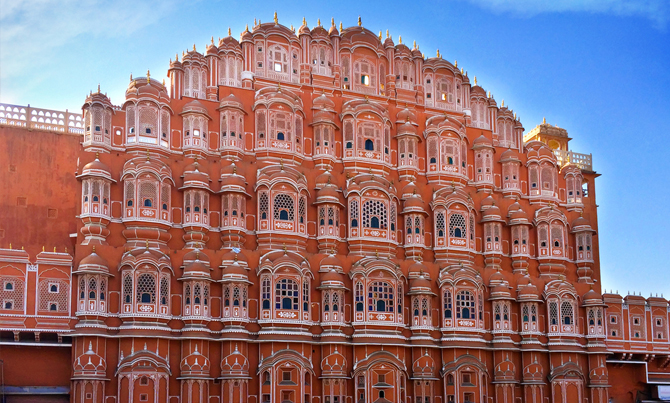
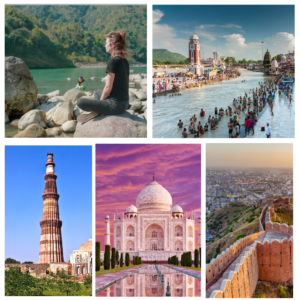
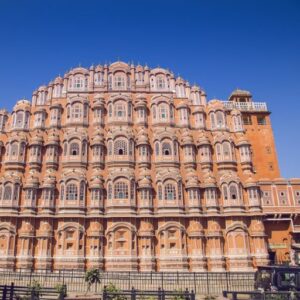
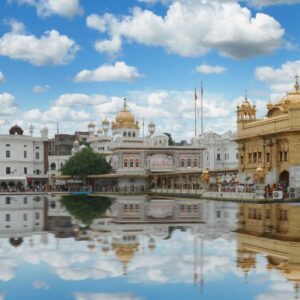
Reviews
There are no reviews yet.